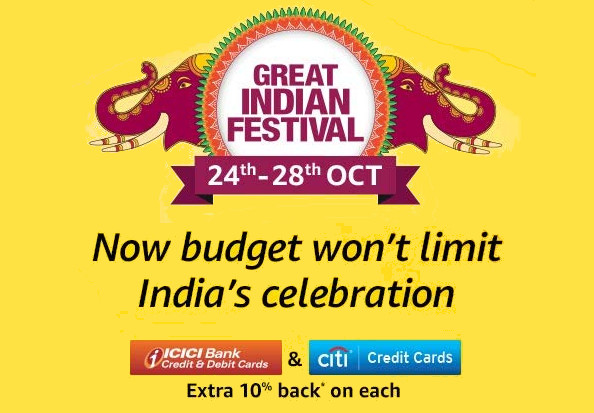Flipkart Big Billion Days sale: Flipkart’s upcoming sale, Big Billion Days, will see many flagship phones go on sale.
Flipkart Big Billion Days sale: Flipkart’s upcoming sale, Big Billion Days, will see many flagship phones go on sale. This will not only include recent launches, but launches from the first half of 2018, as well as popular phone titles from last year. The e-commerce platform has listed new offers on smartphones, that range from Asus Zenfone 5Z to Honor 10, and Xiaomi Mi Mix 2 to Samsung Galaxy S8. Here are the latest deals to be listed for Flipkart’s Big Billion days sale, that will be hled between October 10 and October 14.
Flipkart Big Billion Days sale: Samsung Galaxy S8 4GB RAM variant at Rs 29,990
 Samsung’s 2017 flagship, Galaxy S8 will be a part of Flipkart’s upcoming sale. Samsung’s 2017 flagship, Galaxy S8 will be a part of Flipkart’s upcoming sale.
Samsung’s 2017 flagship, Galaxy S8 will be a part of Flipkart’s upcoming sale. Under the Big Billion Days offer listing, the smartphone’s 4GB variant could be purchased for Rs 29,990. During the sale period, Galaxy S8 will remain at its current price of Rs 45,990, though Flipkart shoppers can avail exchange benefits worth up to Rs 16,000.
In addition, Samsung Galaxy S8 will be available for EMI offers, as well as No Cost EMI deals across major banks, starting from Rs 5,110 per month. While the phone’s offer price remains unchanged, further deals could be announced at the time of sale. With a 5.8-inch Quad HD+ display, Galaxy S8 runs the Exynos 8895 processor backed by a 3000mAh battery, besides having a 12MP rear camera and an 8MP front sensor. The Samsung phone is available with 4GB RAM, 64GB internal storage as well as expandable memory of up to 256GB.
Offers on Mobile phones
1. Samsung s8 - 29,990/-
2. Asus Zenfone 5z - 24,999/-
3. Mi Mix 2 - 22,999/-
4. Redmi Note 5 Pro - 12,999/-
5. Nokia 6.1 Plus - 14,999/-
6. Nokia 5.1 Plus - 10,499/-
7. Asus Zenfone MaxPro M1 - 12,999/-(High End)
8. Samsung Galaxy On6 - 11,990/-
9. Samsung Galaxy On8 - 14,990/-
10. Honor 9N - 11,999/-
11.Honor 10 - 24,999/-
12. Moto Z2 Force - 17,499/-
For more offers visit the link below
|







 Samsung’s 2017 flagship, Galaxy S8 will be a part of Flipkart’s upcoming sale.
Samsung’s 2017 flagship, Galaxy S8 will be a part of Flipkart’s upcoming sale.